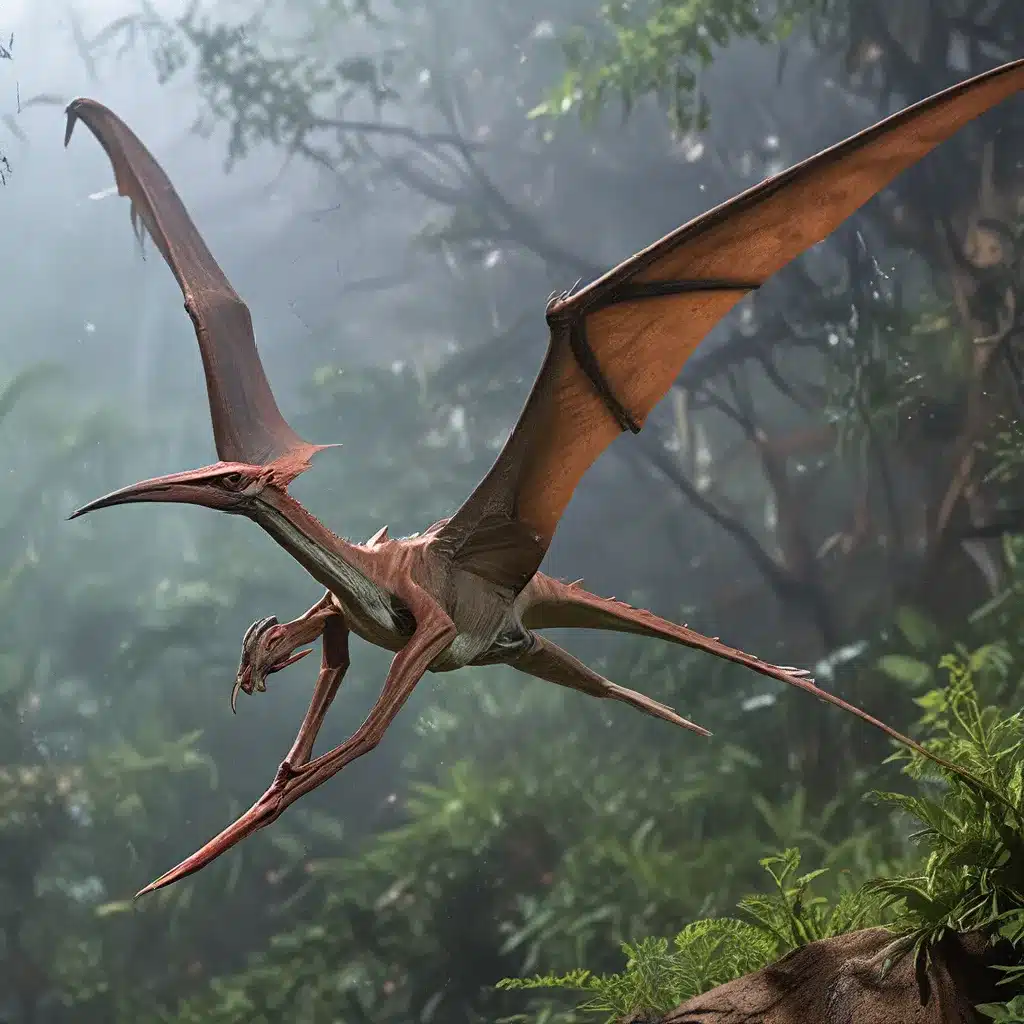
Unveiling the Mysteries of the Pterosaur Genus
The Pteranodon, a remarkable genus of pterosaurs, has long captivated the imagination of paleontologists and the general public alike. These enigmatic flying reptiles, which soared through the skies during the late Cretaceous period, have left behind a fascinating trail of fossil evidence that continues to unlock the secrets of their evolutionary past.
Pteranodon, derived from the Greek words “pteron” meaning “wing” and “anodon” meaning “toothless,” was a member of the pterosaur family, a group of winged reptiles that lived alongside the dinosaurs. While not technically dinosaurs themselves, these remarkable creatures played a crucial role in the ancient ecosystems, serving as the first vertebrates to evolve true powered flight.
Reconstructing the Pteranodon’s Unique Anatomy
One of the most distinctive features of the Pteranodon was its massive wingspan, which could reach up to 7.5 meters (24 feet) in the largest species, making it one of the largest known flying animals of all time. This enormous wing span was supported by a single, elongated fourth finger, which formed the main structure of the wing membrane. The rest of the hand and fingers were relatively small, with no claws, suggesting that Pteranodon was primarily adapted for soaring rather than powered flapping flight.
The skull of the Pteranodon was also quite unique, featuring a long, pointed beak-like structure that would have been well-suited for plucking fish from the waters below. This specialized feeding adaptation, along with the lack of teeth, suggests that Pteranodon was an adept aerial predator, potentially snatching its prey from the surface of the ocean or lakes.
Evolutionary Adaptations and Ecological Roles
The Pteranodon’s impressive size and distinctive features were the result of a remarkable evolutionary journey, shaped by the unique environmental conditions of the late Cretaceous period. As the world’s climate shifted and the oceans teeming with marine life, the Pteranodon and other pterosaurs evolved to take advantage of these abundant food sources, becoming highly specialized aerial hunters and scavengers.
Recent studies have also suggested that Pteranodon may have played a vital role in the ecosystem, serving as a crucial link between the marine and terrestrial environments. Their massive wingspan and ability to soar long distances allowed them to transport nutrients and energy between these two ecosystems, contributing to the overall productivity and biodiversity of the ancient world.
Unraveling the Mysteries of Pteranodon Behavior
Despite the wealth of fossil evidence, many aspects of the Pteranodon’s behavior and lifestyle remain shrouded in mystery. Paleontologists continue to debate the nature of their social structures, mating rituals, and even their methods of reproduction.
Some researchers have proposed that Pteranodon may have lived in large colonies, similar to modern-day seabird colonies, where they could have nested and roosted together. Others have suggested that they may have been more solitary, with individuals or small family groups hunting and soaring independently.
The discovery of Pteranodon nesting sites and fossilized eggs has also shed light on their reproductive behaviors, indicating that they likely laid their eggs in sheltered areas, such as cliff ledges or sandy beaches, where they could be incubated and protected.
Newly Discovered Pteranodon Fossils and Insights
In recent years, the scientific community has been abuzz with exciting new discoveries related to the Pteranodon. Researchers have uncovered a wealth of well-preserved fossils, providing unprecedented glimpses into the anatomy, behavior, and evolutionary history of these remarkable flying reptiles.
One particularly notable discovery was the unearthing of a Pteranodon specimen with preserved soft tissue, including the impressions of its wing membranes and even traces of its feathers. This remarkable find has enabled scientists to better understand the intricate details of Pteranodon’s wing structure and how it may have contributed to their exceptional soaring abilities.
Furthermore, the discovery of Pteranodon fossils in diverse geographic locations has challenged previous assumptions about their range and migration patterns. By studying the distribution of these fossils, researchers have been able to piece together a more comprehensive understanding of how Pteranodon adapted to different environments and climate conditions throughout the Cretaceous period.
Implications for Modern Conservation and Paleontology
The study of the Pteranodon and other pterosaurs has far-reaching implications that extend beyond just understanding the ancient world. In fact, the insights gained from these remarkable flying reptiles have the potential to inform modern-day conservation efforts and shape our understanding of evolutionary processes.
For example, the Pteranodon’s adaptations to long-distance soaring and its potential role in nutrient cycling between marine and terrestrial ecosystems offer valuable lessons for the conservation of modern migratory species and the maintenance of healthy, interconnected habitats.
Moreover, the ongoing discoveries and research surrounding the Pteranodon continue to push the boundaries of paleontological knowledge, inspiring new avenues of scientific inquiry and technological advancements in the field. As we unravel the mysteries of these ancient flyers, we gain a deeper appreciation for the incredible diversity and complexity of life that has inhabited our planet throughout its history.
In conclusion, the Pteranodon stands as a testament to the wonders of the natural world, a living link to a bygone era that continues to captivate and inspire us. Through the dedicated efforts of paleontologists and the ongoing discoveries of new fossils, we are steadily unlocking the evolutionary puzzle of these remarkable flying reptiles, shedding light on the ancient past and illuminating the path forward for our understanding of the world around us.


